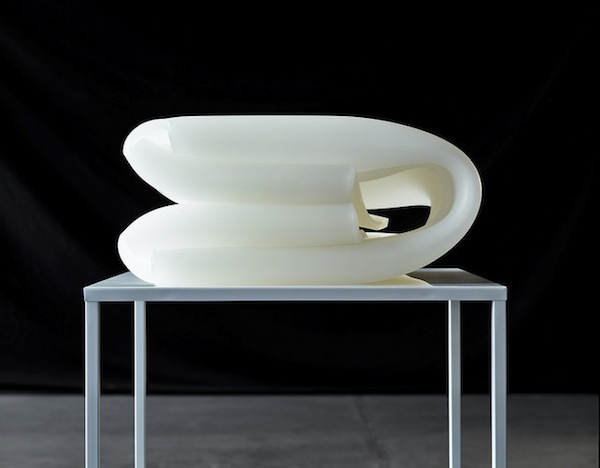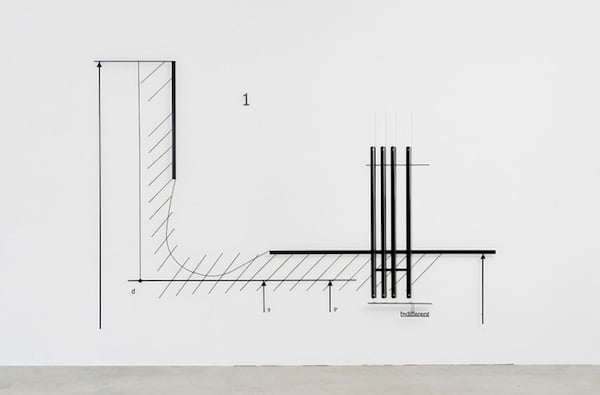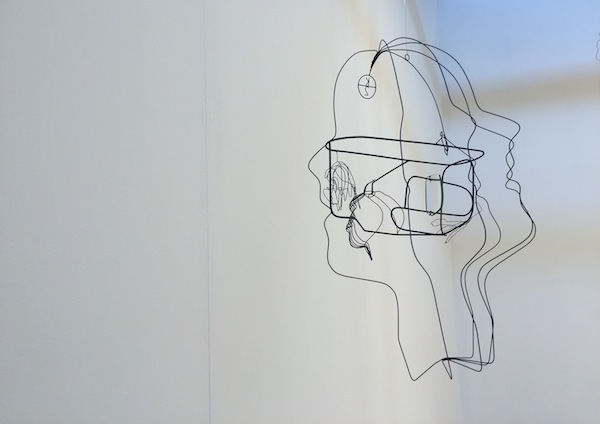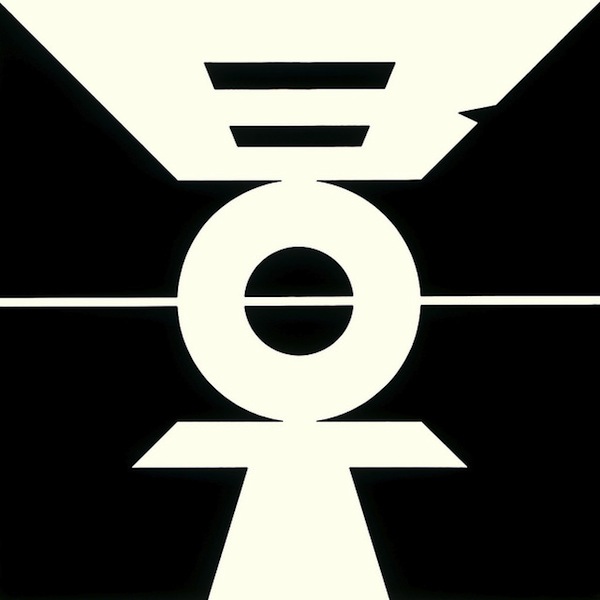Art Fairs
See the Top 10 Booths at Viennacontemporary 2016
Black and white works are having a moment in Vienna.

Black and white works are having a moment in Vienna.

Alyssa Buffenstein

Viennacontemporary kicked off last night at the Marx Halle, a former slaughterhouse in Vienna’s third district. The sprawling fair saw 112 galleries representing 28 countries. Despite international offerings, a few trends were present across the board: Kinetic sculptures, geometric forms, and minimal lines that would make Alexander Calder and Jean Tinguely proud comprised some of the most striking works on view. And on first look, our top 10 picks are nearly all coincidentally devoid of color, instead using shades of black, white, and gray.

Marlena Kudlicka, f=different 9:9 (2016) Image courtesy ZAK | BRANICKA, Berlin.
1. ZAK | BRANICKA (Berlin)
In the Solo Expanded section dedicated to single- and dual artist presentations, works by the Polish, Berlin-based artist Marlena Kudlicka filled Zak | Branicka’s booth. Her powder-coated steel sculptures are informed by scientific and mathematical formulae, but the linear forms come together to create something much more poetic.

Evelyn Loschy, Untitled (Kinetic Sculpture #4) (2012-2016). Image: artnet News.
2. Galerie Michaela Stock (Vienna)
Artist Evelyn Loschy is interested in destruction. For her solo presentation in the ZONE 1 section, a platform for young Austrian artists, she and gallerist Michaela Stock originally wanted to bring a work that may have destroyed the whole fair. Loschy’s 2013 work nothing is for free is an iron swing intended to be hung close to a wall. The “kinetic auto-destructive sculpture” bangs into the wall as it swings, to damage it. But the fair’s safety committee said no, fearing perhaps that the swing would cause a domino effect across the temporary booths. Instead, the gallery brought a more sensual auto-destructive sculpture, an untitled work comprised of a androgynous face and motorized hand made of plaster. The hand is weighted so that, as it strokes the face, it erodes the soft plaster. The effect is unsettling and alluring.

Works by Simon Mullan at the booth of Galerie Nathalie Halgand. Image: artnet News.
3. Galerie Nathalie Halgand (Vienna)
Simon Mullan installed a tile wall on one side of Galerie Nathalie Halgand’s booth. The geometric mosaic is site-specific, with tiles cut by the artist himself, who doesn’t let a single piece go to waste. Hanging around the booth were also a number of smaller tile pieces, all given male names. The sculptural, partition-like works, on the other hand, are given female names. Besides tiles, Mullan’s other obsession is bomber jackets, and a hanging work on another wall is a patchwork of the shiny, black fabric of the sartorial sensation; the backside, of course, is bright orange.

Work by Constantin Luser at Galerie Crone. Image: artnet News.
4. Galerie CRONE (Berlin/Vienna)
In photos, the Vienna-based artist Constantin Luser’s installation at Galerie Crone’s booth looks almost like a series of simple line drawings. But the works are, in fact, wire sculptures; three-dimensional translations of drawings. At the fair, Galerie CRONE filled their booth with a forest of these delicate drawings. Against the stark white walls, the hanging works create tricky and beautiful optical illusions.

Andy Hope 1930, Monster (2016) at Gabriele Senn Galerie. Image: artnet News.
5. Gabriele Senn Galerie (Vienna)
A painting by provocateur Andy Hope 1930 at Gabriele Senn Galerie is so bad it’s good. A black and gray rendering of the Monster Energy logo hangs among other works by the artist, like American A-History Series, a table with a tacky tablecloth, covered in an assortment of Chinese takeout boxes and melted action figures. Monster takes the aggressive energy drink logo out of the realm of extreme sporting events and into the context of contemporary art, an extremely agitating appropriation that somehow warrants recognition.

Erik Bulatov, Bot (Voilà) (2001). Image courtesy Skopia Art Contemporain.
6. Skopia Art Contemporain (Geneva)
Russian painter Erik Bulatov has worked in children’s illustration, landscape painting, and more throughout his decades-long career, but his most powerful works are his large, simplistic, black and white text paintings. Geneva’s Skopia Art Contemporain brought one example of these, Bot, to the fair. The Russian interjection, translated to “Voilá,” is visually powerful whether or not the viewer knows a lick of the language. The composition, centered perfectly around the circle of the “O,” is cinematic.

Christine König Galerie’s booth. Image: artnet News.
7. Christine König (Vienna)
“The tie is out of joint; oh cursed spite, that I was ever born to set it right!” This quote from act I of Hamlet was the starting point for Christine König’s booth, which is covered in international newspaper clippings, a group effort by artists Anetta Mona Chisa & Lucia Tkáčová, Jimmie Durham, Andreas Ducsha, Juergen teller, Ovidiu Anton, Dan Perjovschi, Pierre Bismuth, G.R.A.M., and Gerhard Ruhm. The news reports global disasters and crises, while graffiti playfully questions trending topics like iPhone dependence and selfies, while also superficially referencing ones like “Ebola, Isis, World Bank.” The media overload here comes from paper instead of screens, and on top hangs framed anarchy signs and small photo-collages.

Kinetic jewelry by Leo Peschta at Galerie Lisi Hämmerle.
8. Galerie Lisi Hämmerle (Bregenz)
Viennese artist Leo Peschta works primarily with robotics, but his father is a jeweler, so he’s picked up a few things about wearable art, too. Blending these two fields, he created four wearable kinetic sculptures: three silver necklaces with battery-powered panels that rotate up and down, and a headband that creates one seriously avant-garde hairstyle.

Olaf Holzapfel, White Winding Space Two (2009). Image courtesy Daniel Marzona, Berlin.
9. Daniel Marzona (Berlin)
An elegant acrylic glass sculpture by Olaf Holzapfel sits low on a black lacquered wooden base inside Daniel Marzona’s booth. On first glance, the work looks like a large piece of folded fabric or paper, on the brink of unraveling, but its material strength contradicts this illusion. White Winding Space Two toys with sensations of softness and hardness, and strength and fragility.

Photographs by Aneta Grzeszykowska at Raster Gallery’s booth. Image: artnet News.
10. Raster Gallery (Warsaw)
Everything else on this list may be black and white, but Aneta Grezeszykowska’s work is red all over. Raster Gallery brought a selection of the Polish photographer’s works, which all take a gruesome look at the idea of the self portrait, through a distinctly feminine lens. Negative Make Up (2016), depicts the artist wearing red lipstick and foundation, and then again wearing red lipstick as foundation. Some of her popular “Selfie” series were also at the booth, which capture miniature sculptures of human faces and body parts made of store-bought meat, and altered with makeup, hair, and pins for an uncomfortable effect.
Viennacontemporary is open to the public from September 22-25.